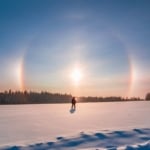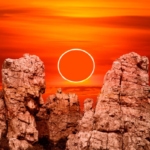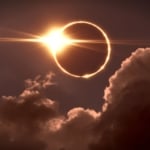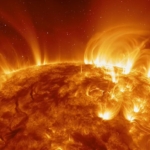Election Day Total Lunar Eclipse 2022 – View Time-Lapse Footage Now
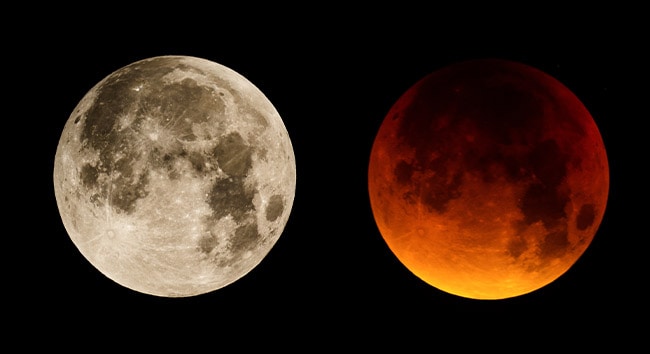
A total lunar eclipse will occur in the early morning hours of Tuesday, November 8, 2022 (Election Day). We share how to catch a glimpse! Read on.
This eclipse will be best seen by readers west of the Mississippi River, including the Hawaiian Islands. It also may be viewed as far west as eastern Asia, Indonesia, New Zealand, and the eastern half of Australia.
November’s total lunar eclipse will be the second and final of 2022. The first total lunar eclipse took place in mid-May. Unlike last May, when the eclipse occurred during convenient evening hours for much of the US, you may have to set your alarm clocks to watch it happen. (See the table below for exact timing.)
The reason why the eastern half of the United States (and those farther east) won’t be able to see the eclipse is because the Moon will be setting while or before it occurs. Along the Atlantic Seaboard, for example, the Moon will disappear below the horizon line as it emerges from the Earth’s shadow.
Why Red?
As for the umbra (the dark, central shadow of Earth cast on the Moon): Since no sunlight can get directly to it, we would expect it to be black, but it is not. In most cases it is more of a coppery reddish tinge, resembling the color of black tea.
This color is due to sunlight refracted through the Earth’s atmosphere. If you were standing on the Moon, you would see the Earth eclipsing the Sun, but all around the rim of the huge black Earth would be a fine ring of fire: The combined light of all of the sunrises and sunsets occurring at that moment.
If the atmosphere is clear, during totality the Moon might appear to light up like a shiny coppery penny. But a cloudy atmosphere (or an atmosphere blocked by an abnormal amount of volcanic dust) might yield a dark eclipse, appearing chocolate brown, gray or even nearly black.
For this upcoming eclipse, the Moon will pass to the north of the center of the shadow and as was the case in May. Totality will be unusually long, lasting 85 minutes. (Typically the total phase of a lunar eclipse lasts about 50 minutes. In the most extreme case, it can last as long as 107 minutes). So as a consequence, we might expect a moderately dark eclipse, possibly featuring a brownish hue across the lower part of the Moon, contrasted by a brighter coppery red upper rim.
About 20 minutes before the Moon enters the dark umbra, you’ll be able to see evidence of the much lighter penumbral shadow, appearing as a “smudginess” across the Moon’s upper left rim. The timetable below provides local circumstances of the various stages. Dashes indicate that the Moon is below the horizon.
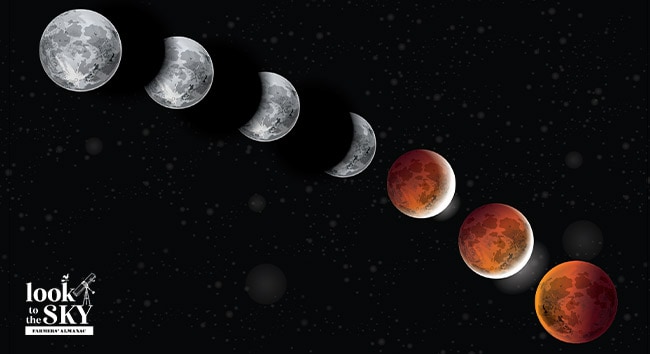
| EST | CST | MST | PST | |
| Moon enters umbra | 4:08 a.m. | 3:08 a.m. | 2:08 a.m. | 1:08 a.m. |
| Total eclipse begins | 5:16 a.m. | 4:16 a.m. | 3:16 a.m. | 2:16 a.m. |
| Mid-eclipse | 5:59 a.m. | 4:59 a.m. | 3:59 a.m. | 2:59 a.m. |
| Total eclipse ends | —- | 5:41 a.m. | 4:41 a.m. | 3:41 a.m. |
| Moon Leaves umbra | —- | —- | 5:49 a.m. | 4:49 a.m. |
Admittedly, a total eclipse of the Moon pales in comparison to the sight of a total eclipse of the Sun, but it is still interesting to see the Moon morph from a flat one-dimensional yellow-white disk to an eerie coppery ball!
At totality, the Moon will appear at least 10,000 times dimmer and many of the fainter stars, which were invisible prior to the eclipse, will now spangle the predawn sky. Take note especially of the Pleiades – the beautiful “Seven Sisters” star cluster, shining high above the eclipsing Moon; hardly evident prior to the Moon show, they will stand out gloriously during the darkest phase of the eclipse.
Good luck and clear skies!
Update: Video of The November 2022 Total Lunar Eclipse
In case you missed the total lunar eclipse on November 8, 2022, here is a time-lapse video courtesy of Mike Lewinski of Crestone, Colorado:
Looking back to 1982 …
The composite photograph below shows a total lunar eclipse from the morning of December 30, 1982. In this example, only the first half of the event was visible before moonset (which will be the case for those on the US east coast this November).
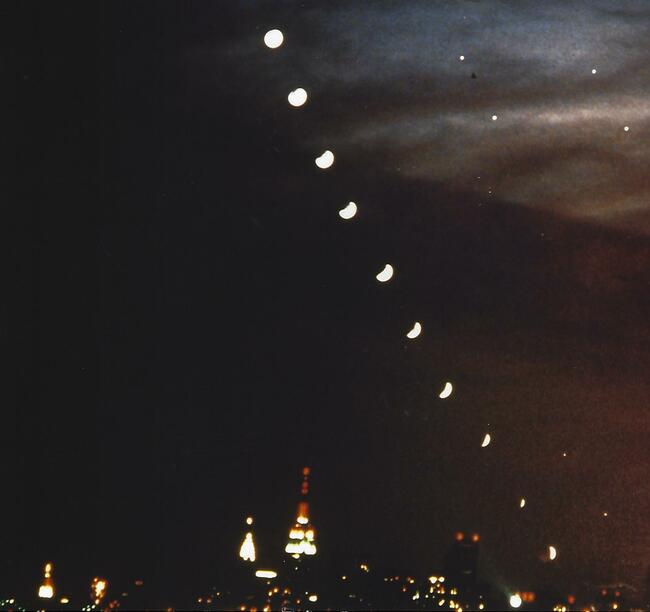
Exposures were taken at five-minute intervals as the Moon descended the western sky from Jones Beach Island, New York. The following night, a second exposure was taken of the Manhattan skyline from Ferry Point Park in the Bronx providing the foreground.
Keep Learning
Eclipses: Dates, Folklore, And Facts
Join The Discussion!
Will you be watching for the eclipse?
Have you ever witnessed an eclipse in person?
Let us know in the comments below!

Joe Rao
Joe Rao is an esteemed astronomer who writes for Space.com, Sky & Telescope, and Natural History Magazine. Mr. Rao is a regular contributor to the Farmers' Almanacand serves as an associate lecturer for the Hayden Planetarium in New York City.


